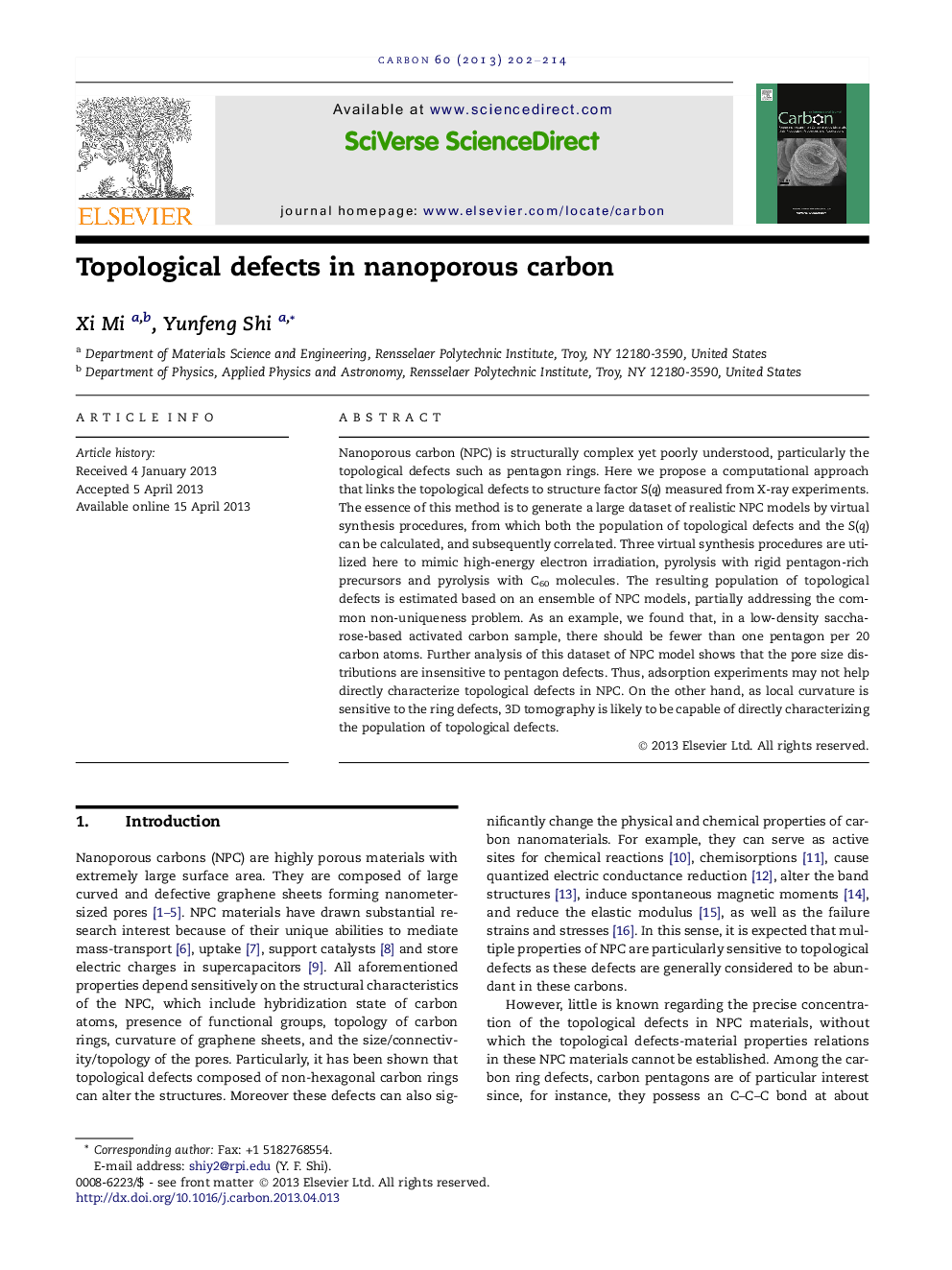| Article ID | Journal | Published Year | Pages | File Type |
|---|---|---|---|---|
| 1414164 | Carbon | 2013 | 13 Pages |
Nanoporous carbon (NPC) is structurally complex yet poorly understood, particularly the topological defects such as pentagon rings. Here we propose a computational approach that links the topological defects to structure factor S(q) measured from X-ray experiments. The essence of this method is to generate a large dataset of realistic NPC models by virtual synthesis procedures, from which both the population of topological defects and the S(q) can be calculated, and subsequently correlated. Three virtual synthesis procedures are utilized here to mimic high-energy electron irradiation, pyrolysis with rigid pentagon-rich precursors and pyrolysis with C60 molecules. The resulting population of topological defects is estimated based on an ensemble of NPC models, partially addressing the common non-uniqueness problem. As an example, we found that, in a low-density saccharose-based activated carbon sample, there should be fewer than one pentagon per 20 carbon atoms. Further analysis of this dataset of NPC model shows that the pore size distributions are insensitive to pentagon defects. Thus, adsorption experiments may not help directly characterize topological defects in NPC. On the other hand, as local curvature is sensitive to the ring defects, 3D tomography is likely to be capable of directly characterizing the population of topological defects.
